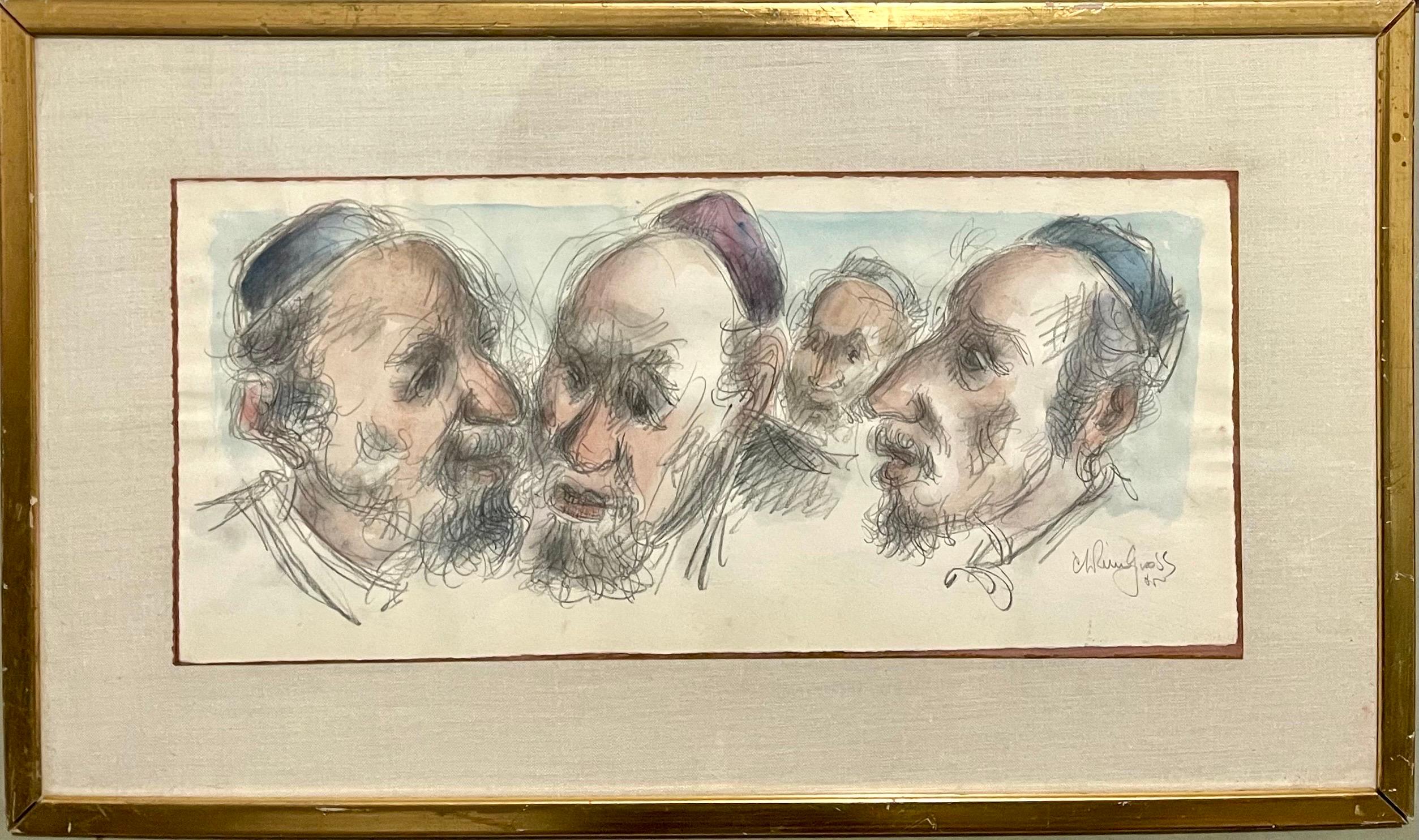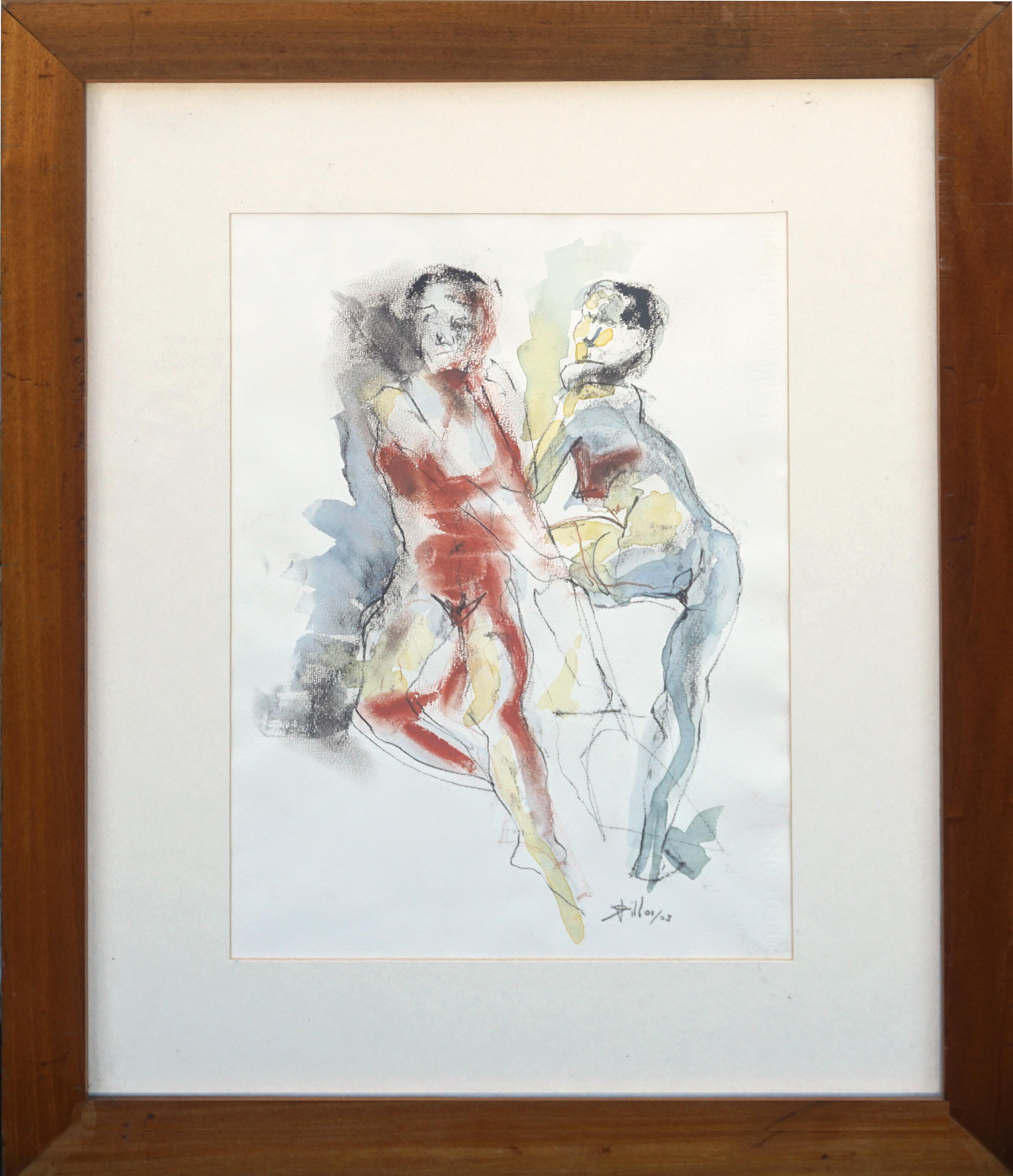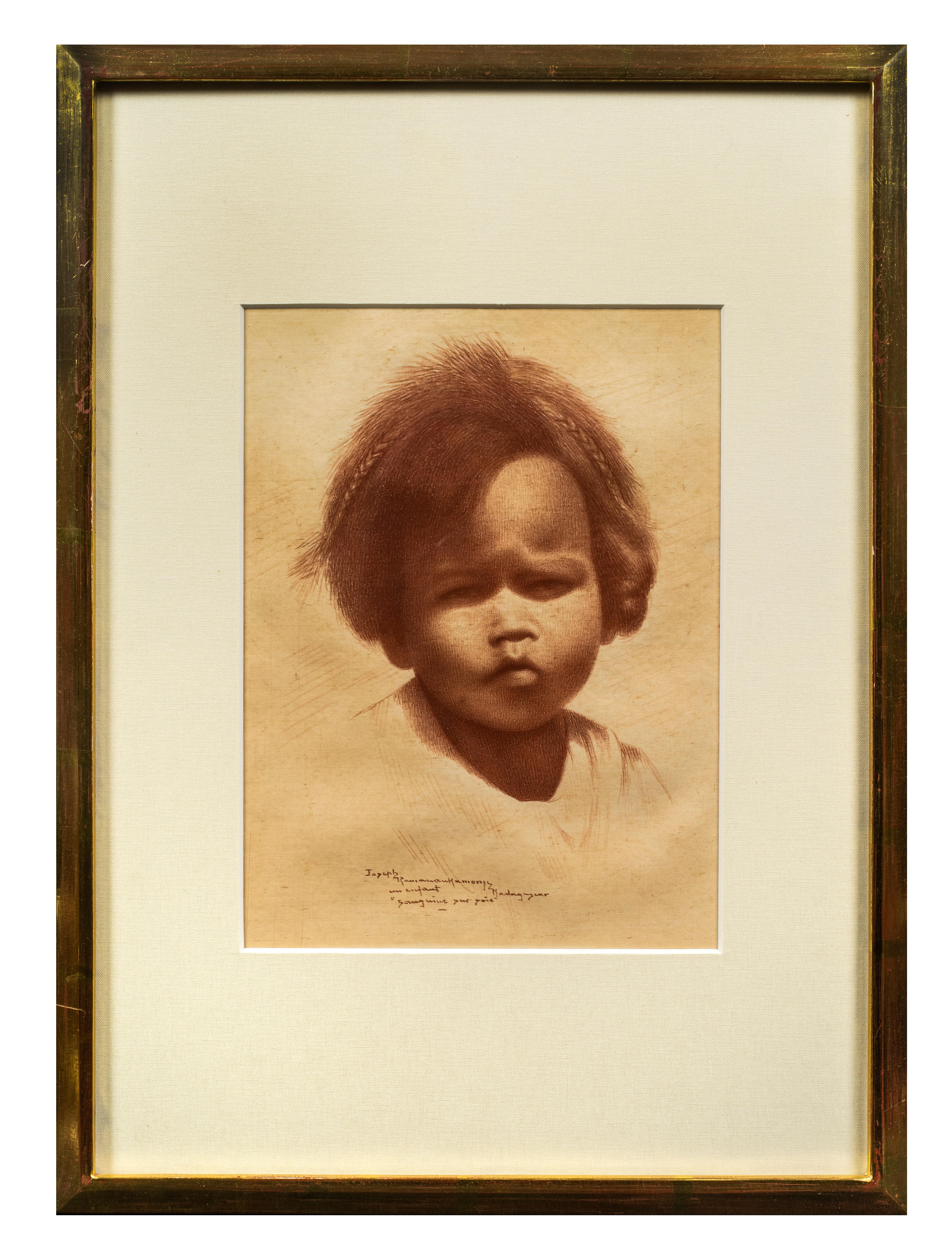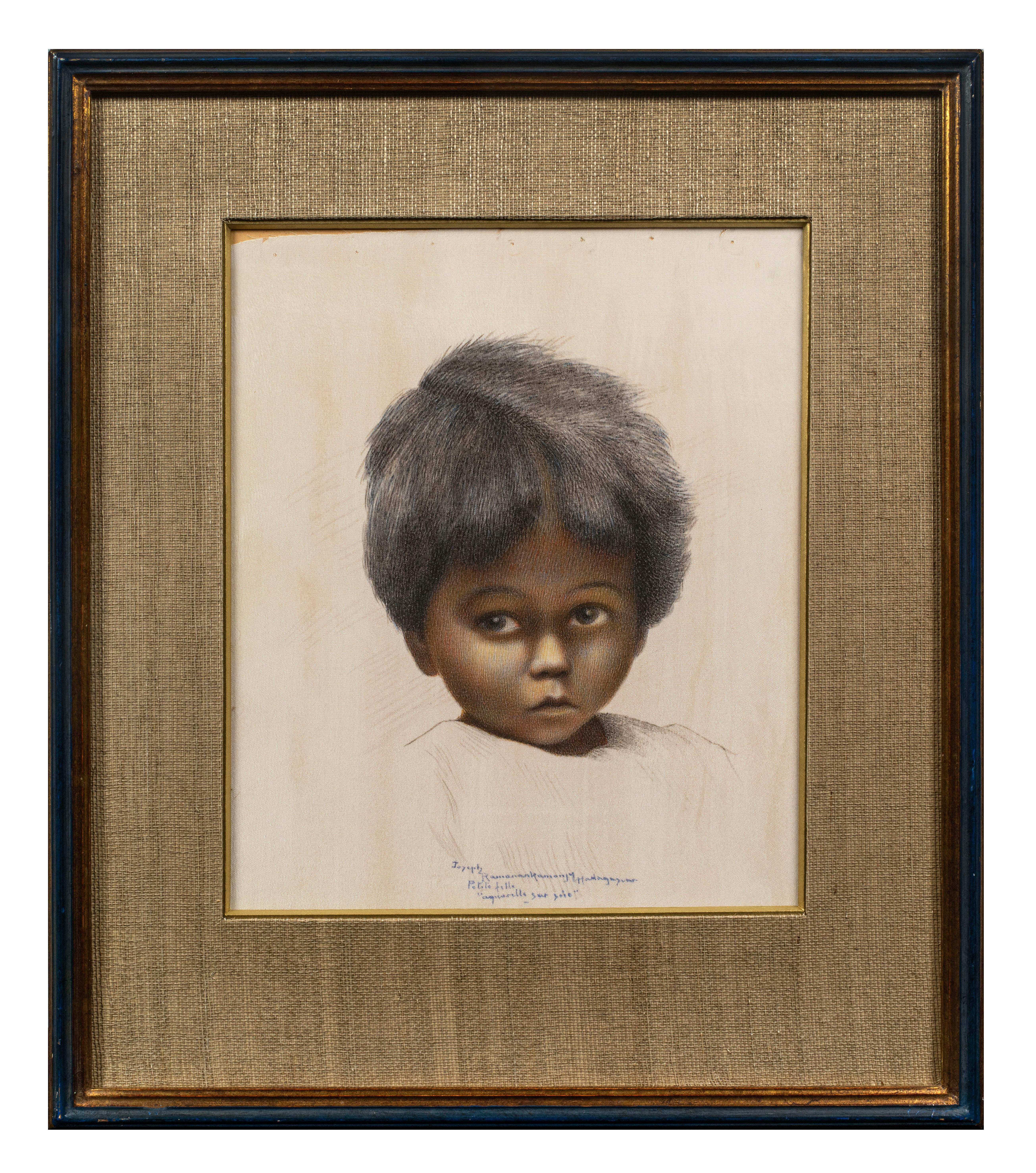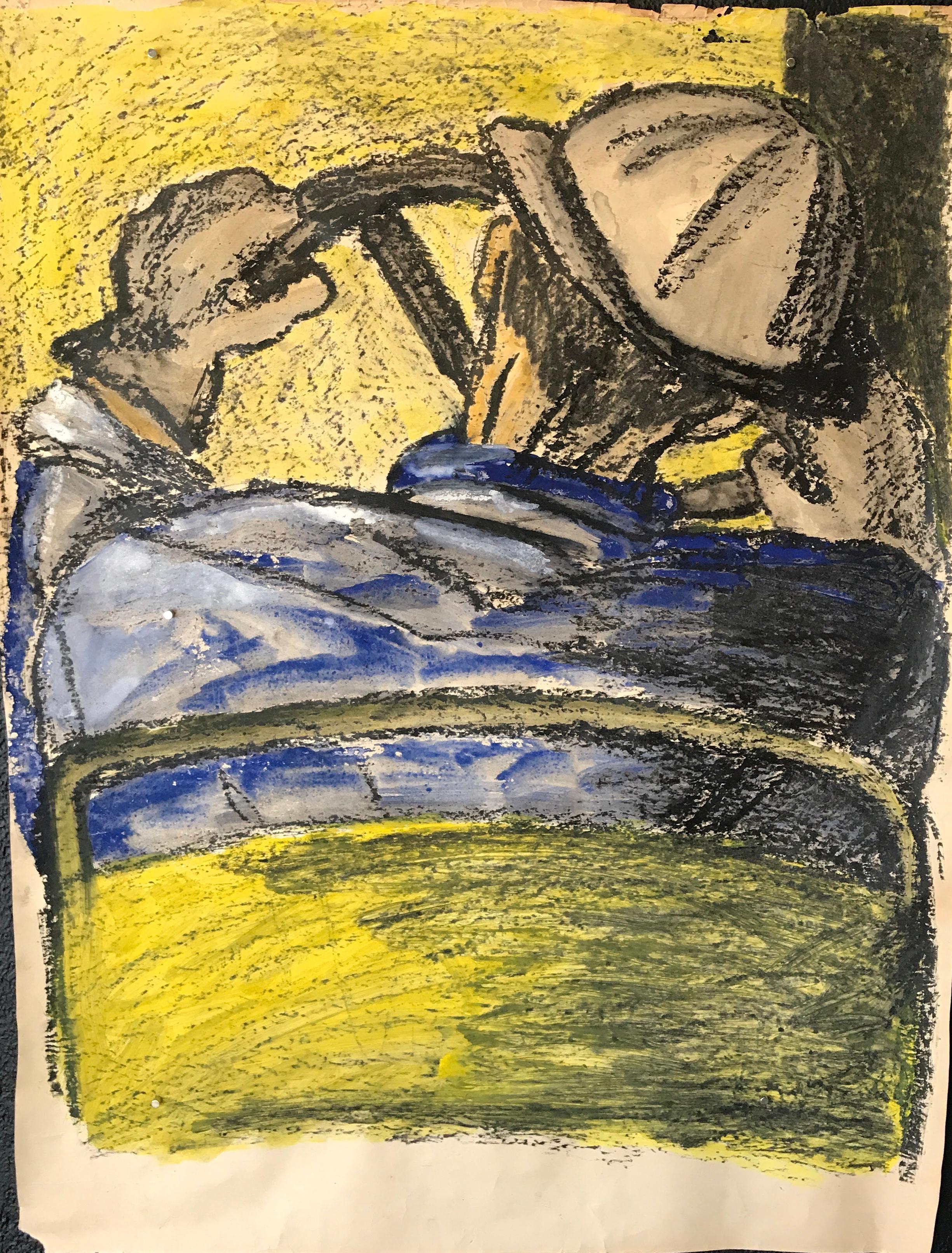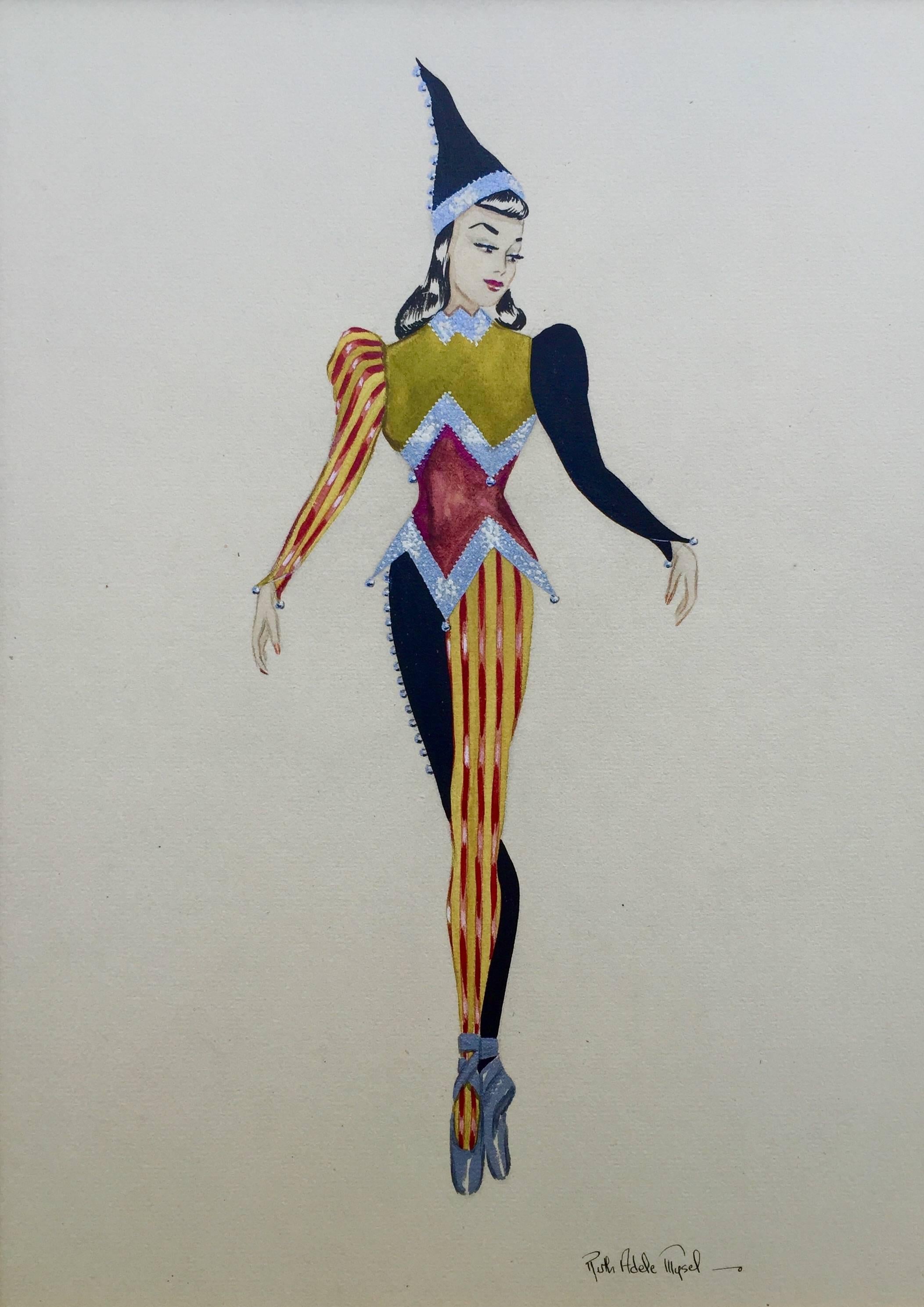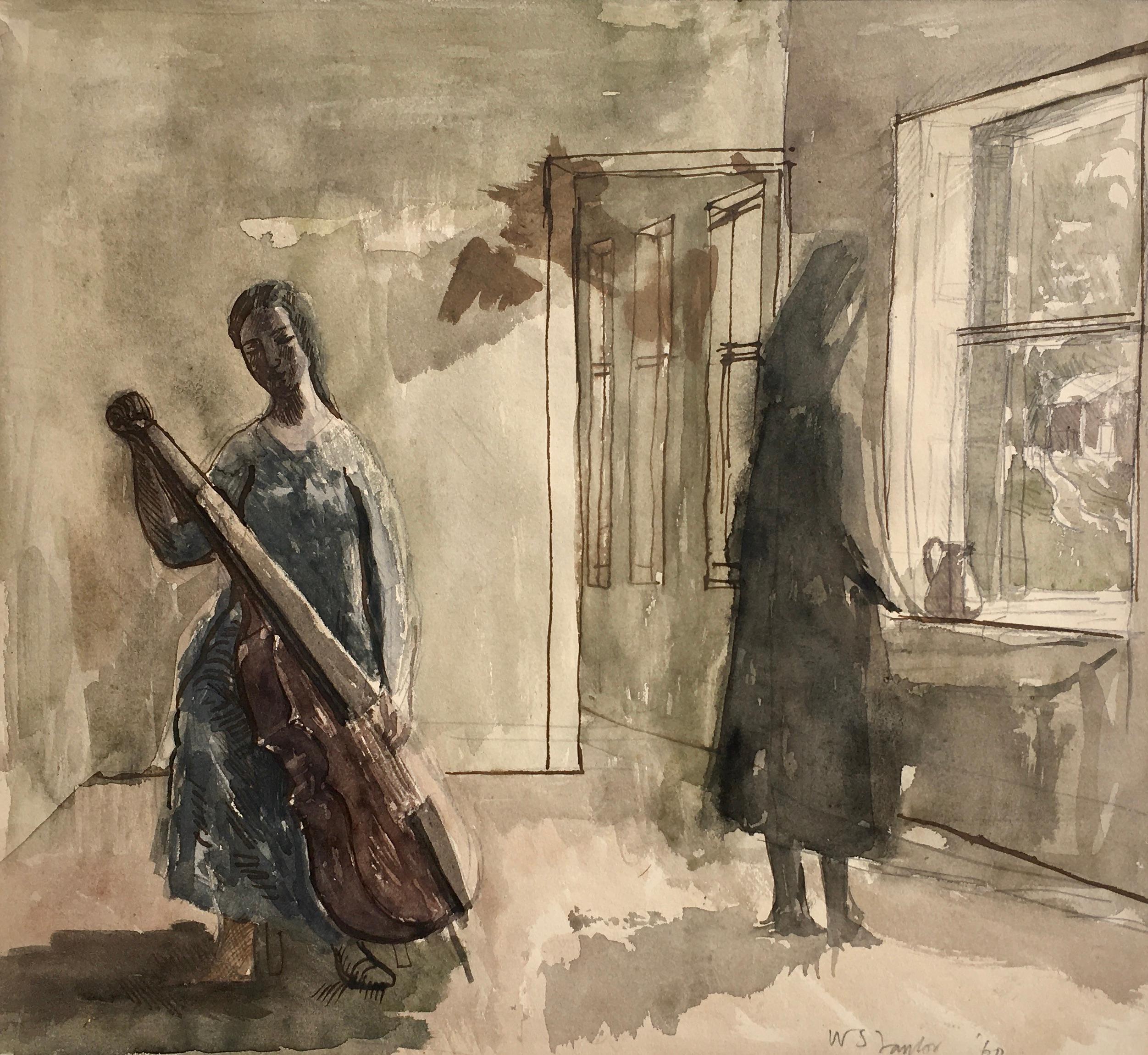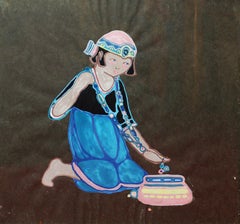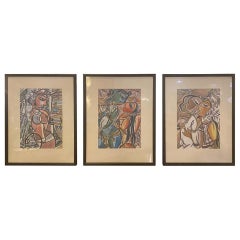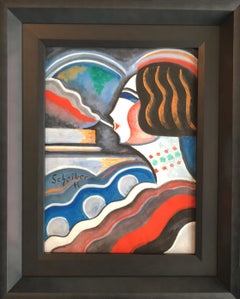
1930s Cabin Scene
View Similar Items
Video Loading
Want more images or videos?
Request additional images or videos from the seller
1 of 15
Victor Feodorov1930s Cabin Scenec. 1930s
c. 1930s
About the Item
- Creator:Victor Feodorov (1897 - 1948, Russian)
- Creation Year:c. 1930s
- Dimensions:Height: 13.5 in (34.29 cm)Width: 18.75 in (47.63 cm)
- Medium:
- Movement & Style:
- Period:
- Condition:
- Gallery Location:Missouri, MO
- Reference Number:1stDibs: LU74732253573
About the Seller
5.0
Vetted Seller
These experienced sellers undergo a comprehensive evaluation by our team of in-house experts.
Established in 1970
1stDibs seller since 2017
141 sales on 1stDibs
Typical response time: 21 hours
More From This SellerView All
- GolfersBy Frederick ConwayLocated in Missouri, MOGolfers, 1928 Fred Conway (American, 1900-1973) Signed and Dated Lower Right 18.5 x 24.5 inches 30.5 x 37 inches with frame A member of the faculty of the Washington University Art ...Category
1920s American Modern Figurative Drawings and Watercolors
MaterialsPaper, Watercolor
Price Upon Request - Three GirlsBy Gisella LoefflerLocated in Missouri, MOGisella Loeffler "Three Girlsl" c. 1919 Gouache on Paper Initialed Lower Left Framed Size: approx 19 x 13 inches In a village filled with colorful characters, few Taos artists were as colorful as Gisella Loeffler [1900-1977]. From her handmade Austrian clothing and hand-painted furniture to whimsical paintings and letters written in multicolored crayon, joyful color defined the artist, who early on chose to use simply Gisella as her professional name and was known as such to everyone in Taos. In spite of her fame there—the Taos News once labeled her a Taos legend—Gisella is rarely included in scholarly discussions of the Taos Art Colony. This oversight is likely due to the naive quality of her work, in which children or childlike adults inhabit a simple, brightly colored world filled with happiness. The macabre, the sad, the tortured, the offensive—all have no place in Gisella’s paintings. Her naive style of work looks very different from that of the better-known early Taos artists. Yet both Gisella’s artwork and her interesting life command attention. Born in Austria, Gisella came to the United States with her family in 1908, settling in St. Louis, MO. After studying art at Washington University in St. Louis, she became a prominent member of the local art community, joining the St. Louis Art Guild as well as the Boston Society of Arts and Crafts. In addition to creating posters for the St. Louis Post Dispatch, Gisella won prizes from the Artists Guild of the Author’s League of America in 1919 and 1920 and from the Kansas City Art Institute in 1923. She also began working in textiles, including batik, to which she would return later in her career. In the early 1920s Gisella married writer and music critic Edgar Lacher. A difficult character, Lacher may have chafed under Gisella’s success, for the couple divorced in the 1930s. Having seen a local exhibition of paintings by Taos artists Oscar Berninghaus (who was from St. Louis) and Ernest Blumenschein, Gisella felt drawn to Taos, which reminded her of the villages of her native Austria. In 1933 the single mother with two daughters, Undine and Aithra, moved to Taos, where she lived off and on for the rest of her life. She traveled frequently, spending extended periods in Mexico, South America, and California, but always returned to New Mexico. Gisella initially applied an Austro-Hungarian folk-art style to the Indian and Hispanic subjects that she found in New Mexico. In her early work she covered her surfaces with decorative floral and faunal motifs, and her images were flat with no attempt at rendering traditional one-point perspective. Eventually, though, Gisella developed her own style, often using children or childlike figures as subjects. Still, the influence of her native country’s folk art remained evident in her New Mexican, Mexican, and South American images. In 1938 Gisella moved briefly to Los Griegos, north of Albuquerque, to be closer to medical facilities for her eldest daughter, who was suffering from rheumatic fever. Two years later, she moved to California to participate in the war effort, painting camouflage and decals on airplanes for Lockheed. In California, Gisella broadened her range of artistic pursuits. She taught art privately, created illustrations for Scripts Magazine, and did interior design for private homes. She also designed greeting cards, a practice she continued after her return to New Mexico, where she created a series of Christmas cards. Gisella began illustrating children’s books in 1941 when she collaborated on Franzi and Gizi with author Margery Bianco. Eventually she wrote and illustrated her own book, El Ekeko, in 1964. She also designed ceramics—her Happy Time Dinnerware, marketed by Poppy Trail...Category
1910s Modern Figurative Drawings and Watercolors
MaterialsGouache
Price Upon Request - The Necklace and the PotBy Gisella LoefflerLocated in Missouri, MOGisella Loeffler "The Necklace and the Pot" c. 1919 Gouache on Paper Initialed Lower Left Framed Size: approx 15 x 15 inches In a village filled with colorful characters, few Taos artists were as colorful as Gisella Loeffler [1900-1977]. From her handmade Austrian clothing and hand-painted furniture to whimsical paintings and letters written in multicolored crayon, joyful color defined the artist, who early on chose to use simply Gisella as her professional name and was known as such to everyone in Taos. In spite of her fame there—the Taos News once labeled her a Taos legend—Gisella is rarely included in scholarly discussions of the Taos Art Colony. This oversight is likely due to the naive quality of her work, in which children or childlike adults inhabit a simple, brightly colored world filled with happiness. The macabre, the sad, the tortured, the offensive—all have no place in Gisella’s paintings. Her naive style of work looks very different from that of the better-known early Taos artists. Yet both Gisella’s artwork and her interesting life command attention. Born in Austria, Gisella came to the United States with her family in 1908, settling in St. Louis, MO. After studying art at Washington University in St. Louis, she became a prominent member of the local art community, joining the St. Louis Art Guild as well as the Boston Society of Arts and Crafts. In addition to creating posters for the St. Louis Post Dispatch, Gisella won prizes from the Artists Guild of the Author’s League of America in 1919 and 1920 and from the Kansas City Art Institute in 1923. She also began working in textiles, including batik, to which she would return later in her career. In the early 1920s Gisella married writer and music critic Edgar Lacher. A difficult character, Lacher may have chafed under Gisella’s success, for the couple divorced in the 1930s. Having seen a local exhibition of paintings by Taos artists Oscar Berninghaus (who was from St. Louis) and Ernest Blumenschein, Gisella felt drawn to Taos, which reminded her of the villages of her native Austria. In 1933 the single mother with two daughters, Undine and Aithra, moved to Taos, where she lived off and on for the rest of her life. She traveled frequently, spending extended periods in Mexico, South America, and California, but always returned to New Mexico. Gisella initially applied an Austro-Hungarian folk-art style to the Indian and Hispanic subjects that she found in New Mexico. In her early work she covered her surfaces with decorative floral and faunal motifs, and her images were flat with no attempt at rendering traditional one-point perspective. Eventually, though, Gisella developed her own style, often using children or childlike figures as subjects. Still, the influence of her native country’s folk art remained evident in her New Mexican, Mexican, and South American images. In 1938 Gisella moved briefly to Los Griegos, north of Albuquerque, to be closer to medical facilities for her eldest daughter, who was suffering from rheumatic fever. Two years later, she moved to California to participate in the war effort, painting camouflage and decals on airplanes for Lockheed. In California, Gisella broadened her range of artistic pursuits. She taught art privately, created illustrations for Scripts Magazine, and did interior design for private homes. She also designed greeting cards, a practice she continued after her return to New Mexico, where she created a series of Christmas cards. Gisella began illustrating children’s books in 1941 when she collaborated on Franzi and Gizi with author Margery Bianco. Eventually she wrote and illustrated her own book, El Ekeko, in 1964. She also designed ceramics—her Happy Time Dinnerware, marketed by Poppy Trail...Category
1910s Modern Figurative Drawings and Watercolors
MaterialsGouache
Price Upon Request - Going for a StrollBy Gisella LoefflerLocated in Missouri, MOGisella Loeffler "Going for a Stroll" c. 1919 Gouache on Paper Initialed Framed Size: approx 17 x 13 inches In a village filled with colorful characters, few Taos artists were as colorful as Gisella Loeffler [1900-1977]. From her handmade Austrian clothing and hand-painted furniture to whimsical paintings and letters written in multicolored crayon, joyful color defined the artist, who early on chose to use simply Gisella as her professional name and was known as such to everyone in Taos. In spite of her fame there—the Taos News once labeled her a Taos legend—Gisella is rarely included in scholarly discussions of the Taos Art Colony. This oversight is likely due to the naive quality of her work, in which children or childlike adults inhabit a simple, brightly colored world filled with happiness. The macabre, the sad, the tortured, the offensive—all have no place in Gisella’s paintings. Her naive style of work looks very different from that of the better-known early Taos artists. Yet both Gisella’s artwork and her interesting life command attention. Born in Austria, Gisella came to the United States with her family in 1908, settling in St. Louis, MO. After studying art at Washington University in St. Louis, she became a prominent member of the local art community, joining the St. Louis Art Guild as well as the Boston Society of Arts and Crafts. In addition to creating posters for the St. Louis Post Dispatch, Gisella won prizes from the Artists Guild of the Author’s League of America in 1919 and 1920 and from the Kansas City Art Institute in 1923. She also began working in textiles, including batik, to which she would return later in her career. In the early 1920s Gisella married writer and music critic Edgar Lacher. A difficult character, Lacher may have chafed under Gisella’s success, for the couple divorced in the 1930s. Having seen a local exhibition of paintings by Taos artists Oscar Berninghaus (who was from St. Louis) and Ernest Blumenschein, Gisella felt drawn to Taos, which reminded her of the villages of her native Austria. In 1933 the single mother with two daughters, Undine and Aithra, moved to Taos, where she lived off and on for the rest of her life. She traveled frequently, spending extended periods in Mexico, South America, and California, but always returned to New Mexico. Gisella initially applied an Austro-Hungarian folk-art style to the Indian and Hispanic subjects that she found in New Mexico. In her early work she covered her surfaces with decorative floral and faunal motifs, and her images were flat with no attempt at rendering traditional one-point perspective. Eventually, though, Gisella developed her own style, often using children or childlike figures as subjects. Still, the influence of her native country’s folk art remained evident in her New Mexican, Mexican, and South American images. In 1938 Gisella moved briefly to Los Griegos, north of Albuquerque, to be closer to medical facilities for her eldest daughter, who was suffering from rheumatic fever. Two years later, she moved to California to participate in the war effort, painting camouflage and decals on airplanes for Lockheed. In California, Gisella broadened her range of artistic pursuits. She taught art privately, created illustrations for Scripts Magazine, and did interior design for private homes. She also designed greeting cards, a practice she continued after her return to New Mexico, where she created a series of Christmas cards. Gisella began illustrating children’s books in 1941 when she collaborated on Franzi and Gizi with author Margery Bianco. Eventually she wrote and illustrated her own book, El Ekeko, in 1964. She also designed ceramics—her Happy Time Dinnerware, marketed by Poppy Trail...Category
1910s Modern Figurative Drawings and Watercolors
MaterialsGouache
Price Upon Request - Mother and Child In the GardenBy Gisella LoefflerLocated in Missouri, MOGisella Loeffler "Mother and Child in the Gardenl" 1919 Gouache on Paper Initialed Lower Right Framed Size: approx 19 x 10 3/4 inches In a village filled with colorful characters, few Taos artists were as colorful as Gisella Loeffler [1900-1977]. From her handmade Austrian clothing and hand-painted furniture to whimsical paintings and letters written in multicolored crayon, joyful color defined the artist, who early on chose to use simply Gisella as her professional name and was known as such to everyone in Taos. In spite of her fame there—the Taos News once labeled her a Taos legend—Gisella is rarely included in scholarly discussions of the Taos Art Colony. This oversight is likely due to the naive quality of her work, in which children or childlike adults inhabit a simple, brightly colored world filled with happiness. The macabre, the sad, the tortured, the offensive—all have no place in Gisella’s paintings. Her naive style of work looks very different from that of the better-known early Taos artists. Yet both Gisella’s artwork and her interesting life command attention. Born in Austria, Gisella came to the United States with her family in 1908, settling in St. Louis, MO. After studying art at Washington University in St. Louis, she became a prominent member of the local art community, joining the St. Louis Art Guild as well as the Boston Society of Arts and Crafts. In addition to creating posters for the St. Louis Post Dispatch, Gisella won prizes from the Artists Guild of the Author’s League of America in 1919 and 1920 and from the Kansas City Art Institute in 1923. She also began working in textiles, including batik, to which she would return later in her career. In the early 1920s Gisella married writer and music critic Edgar Lacher. A difficult character, Lacher may have chafed under Gisella’s success, for the couple divorced in the 1930s. Having seen a local exhibition of paintings by Taos artists Oscar Berninghaus (who was from St. Louis) and Ernest Blumenschein, Gisella felt drawn to Taos, which reminded her of the villages of her native Austria. In 1933 the single mother with two daughters, Undine and Aithra, moved to Taos, where she lived off and on for the rest of her life. She traveled frequently, spending extended periods in Mexico, South America, and California, but always returned to New Mexico. Gisella initially applied an Austro-Hungarian folk-art style to the Indian and Hispanic subjects that she found in New Mexico. In her early work she covered her surfaces with decorative floral and faunal motifs, and her images were flat with no attempt at rendering traditional one-point perspective. Eventually, though, Gisella developed her own style, often using children or childlike figures as subjects. Still, the influence of her native country’s folk art remained evident in her New Mexican, Mexican, and South American images. In 1938 Gisella moved briefly to Los Griegos, north of Albuquerque, to be closer to medical facilities for her eldest daughter, who was suffering from rheumatic fever. Two years later, she moved to California to participate in the war effort, painting camouflage and decals on airplanes for Lockheed. In California, Gisella broadened her range of artistic pursuits. She taught art privately, created illustrations for Scripts Magazine, and did interior design for private homes. She also designed greeting cards, a practice she continued after her return to New Mexico, where she created a series of Christmas cards. Gisella began illustrating children’s books in 1941 when she collaborated on Franzi and Gizi with author Margery Bianco. Eventually she wrote and illustrated her own book, El Ekeko, in 1964. She also designed ceramics—her Happy Time Dinnerware, marketed by Poppy Trail...Category
1910s Modern Figurative Drawings and Watercolors
MaterialsGouache
Price Upon Request - Island BreezeLocated in Missouri, MOExotic Coastal Scene By. Carroll Bill (American, 1877-1967) Signed Lower Left Unframed: 16" x 20.5" Framed: 22.5" x 26.75" Born Philadelphia, PA, Dec. 28, 1877; died East Weymouth, MA, Jan. 1968. Painter. Designer. Craftsman. Muralist. Architect. Writer. Studied at the Harvard Architectural school. Lived in Wichita. Authored articles in House Beautiful & Architectural Forum...Category
20th Century American Modern Landscape Drawings and Watercolors
MaterialsWatercolor
Price Upon Request
You May Also Like
- Man and Woman Figurative Water Color Paintings in the Style of Picasso, Set of 3Located in Plainview, NYA group of three Picasso style figurative water color paintings depicting a man and a woman with an erotic flair. The paintings are framed and signed.Category
1980s Modern Figurative Drawings and Watercolors
MaterialsWatercolor
- BowlingLocated in Los Angeles, CA(Note: This work is part of our exhibition Connected by Creativity: WPA Era Works from the Collection of Leata and Edward Beatty Rowan) Watercolor on paper, 7 ¾ x 10 ½ inches unframed, 14 ½ x 16 ½ inches framed, signed, dated, and located lower left as follows: “David McCosh...Category
1920s American Modern Figurative Drawings and Watercolors
MaterialsWatercolor
- Untitled image of woman smoking by modernist painter Hugó ScheiberBy Hugó ScheiberLocated in Hudson, NYThis artwork is framed with non-reflective, UV protection Museum glass. The frame size is 15.5" x 12.75" About this artist: Hugó Scheiber was born in Budapest, Hungary in 1873. His ...Category
Early 20th Century Modern Portrait Drawings and Watercolors
MaterialsTempera, Gouache, Paper
- Study for Fallen Angel IIIBy Daniel BarkleyLocated in London, GBWatercolour, signed and dated (lower right), 76cm x 56cm, (93cm x 69cm framed). Daniel Barkley is known for his nude figurative work alluding to myths, legends and art history, whi...Category
2010s Modern Figurative Drawings and Watercolors
MaterialsWatercolor, Paper
- Original 70's Hand Painted Textile Design Gouache Green Blue Color on Grey PapeLocated in ALCOY/ALCOI, ESFlower bouquet design. Sealed on the back with the design studio name and number 484 We offer a small number of these original illustration designs by this design studio based in Al...Category
1970s Modern Still-life Prints
MaterialsPaper, Gouache
$599 Sale Price35% Off - Standing Female Nude watercolor by Philadelphia Artist Adolphe BorieLocated in Philadelphia, PAADOLPHE BORIE (American, 1877-1934) Standing Female Nude Wash & charcoal on gray laid paper, 12 x 9 inches Framed: 16 x 13 inches Estate stamp lower right Born in Philadelphia, Adol...Category
Early 20th Century Modern Figurative Drawings and Watercolors
MaterialsCharcoal, Paper, Watercolor
Recently Viewed
View AllMore Ways To Browse
1930s Vintage
German Scenes
Cabin Modern
Vintage Cabin
Cabin Art
Russian Scenes
Victor C
German Paintings 1930s
Russian Music Vintage
Cabin Painting
Cabin Scene
1930s German Watercolor
South Africa Watercolor
South African Watercolour
South African Watercolor
German Mid Century Watercolor
Watercolor Paintings Of Missions
Salle David
